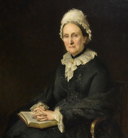
-
Celebrations begin to commemorate 50 years of the University of Dundee
2017 -
The University of Dundee becomes a fully independent institution under the terms of the Royal Charter.
1967 -
Ordinances issued in 1897 made University College form part of St Andrews. and establish a Faculty of Medicine.
1897 -
The Deed formally creating University College Dundee was signed by founders Miss Mary Ann Baxter and her cousin Dr John Boyd Baxter.
1881
Pioneering experiments
-
date
Fri, 07 Apr 2017
-
Running Time
00:05:23
The electric light, a modern sewage system and flatscreen televisions – all inventions from Dundee! Hear how they’re connected with the University of Dundee and how they changed the world.
Episode Transcript
No two paths to world-changing innovation in science are ever the same. Throughout the centuries, however, scientists have found that Dundee is a place that has allowed ideas to flourish.
James Bowman Lindsay, for example, is remembered as as a man of vision. Among the innovations that can be traced back to his work are the incandescent light bulb and submarine telegraphy.
Born near Arbroath in 1799 into a farming family, he showed academic promise and managed to study mathematics and physics at St Andrews before taking up a position at the Watt institution as a lecturer in mathematics.
Only six years later, and decades before Edison announced the invention of the lightbulb, Lindsay demonstrated electric light, which was inspired by his desire to see safer working conditions in the city’s sometimes perilous jute mills.
Lindsay was also a pioneer of wireless telegraphy through water, another idea that was developed following his death in 1862.
Dundee-born physicist and engineer, Sir James Alfred Ewing was only seven years old when Lindsay died and went on to spearhead work in the magnetic properties of metals.
Ewing had been educated at the High School of Dundee before studying physics at Edinburgh and graduating in engineering.
He was recruited to Tokyo Imperial University, where he was instrumental in founding Japanese seismology as professor of mechanical engineering. After five years, in 1883, he returned to his home city to become the first Professor of Engineering at University College, Dundee.
Like Lindsay, he was appalled at the conditions in which his fellow Dundonians lived and worked to improve amenities such as the sewerage system.
Another part of Ewing’s legacy, apart from the building that bears his name in the School of Engineering, is his coining of the term hysteresis, to mean refers to systems, organisms and fields that have memory. For example, when iron has been exposed to and removed from a magnetic field it maintains magnetisation.
Ewing accepted the role as Principal of the University of Edinburgh in 1916, a role he held until retirement in 1929.
One of the greatest pioneering partnerships to have worked at the University of Dundee must be Professor Peter Le Comber and Walter Spear.
The men met while Spear was in post at the University of Leicester and Le Comber one of his brightest students. When Spear moved to the University of Dundee in 1969 to take up the Harris Chair of Physics, Le Comber came to work alongside him and together they established the Carnegie Laboratory of Physics to study non-crystalline solids.
The work the men carried out in the 1970s in the development of amorphous silicon. This in turn led to the creation of the amorphous film silicon transistor, and it was this innovation that directly led to the LCD technology that would revolutionise how we live.
That technology is now a huge part of our everyday lives in mobile phones, computer monitors, flatscreen televisions and solar panels.
Their significant contribution to this field led to Spear receiving the European Physical Society Europhysics prize in 1976 and the Max Born Medal and Prize for Physics in 1977. Le Comber was responsible for co-inventing 10 patents and authoring more than 170 papers.
When Spear retired in 1988, Le Comber took the Harris Chair for Physics but only held it for four years before his sudden death in 1992. Spear’s research work effectively came to an end at that point and he died in 2008.
The men are rightly commemorated together on Discovery Walk among Dundee’s great innovators.
Eddie Small

Eddie Small is a lecturer in Creative Writing at the University of Dundee. He was awarded the Student-led ‘Most Inspirational Teacher at the University’ prize in May 2016. His biography of Mary Lily Walker, Forgotten Visionary of Dundee, was launched in 2013, and he was asked to write a play, Dundee’s Four Marys, which has been performed 7 times. He wrote and performed in ‘Pantomime of Death’ at the 2016 Edinburgh Fringe. A committed local historian, he regularly give walking tours of his city.
-
Celebrations begin to commemorate 50 years of the University of Dundee
2017 -
The University of Dundee becomes a fully independent institution under the terms of the Royal Charter.
 1967
1967 -
Ordinances issued in 1897 made University College form part of St Andrews. and establish a Faculty of Medicine.
1897 -
The Deed formally creating University College Dundee was signed by founders Miss Mary Ann Baxter and her cousin Dr John Boyd Baxter.
 1881
1881